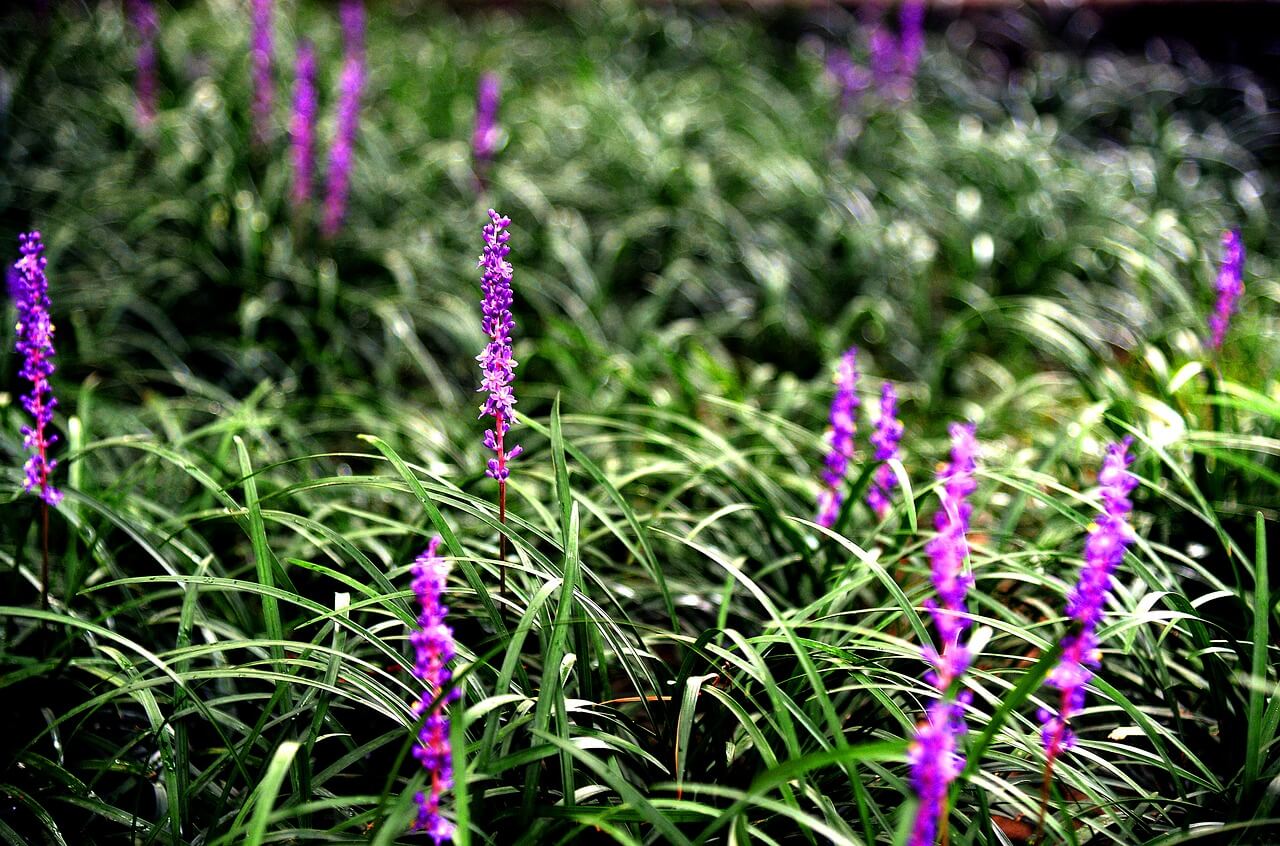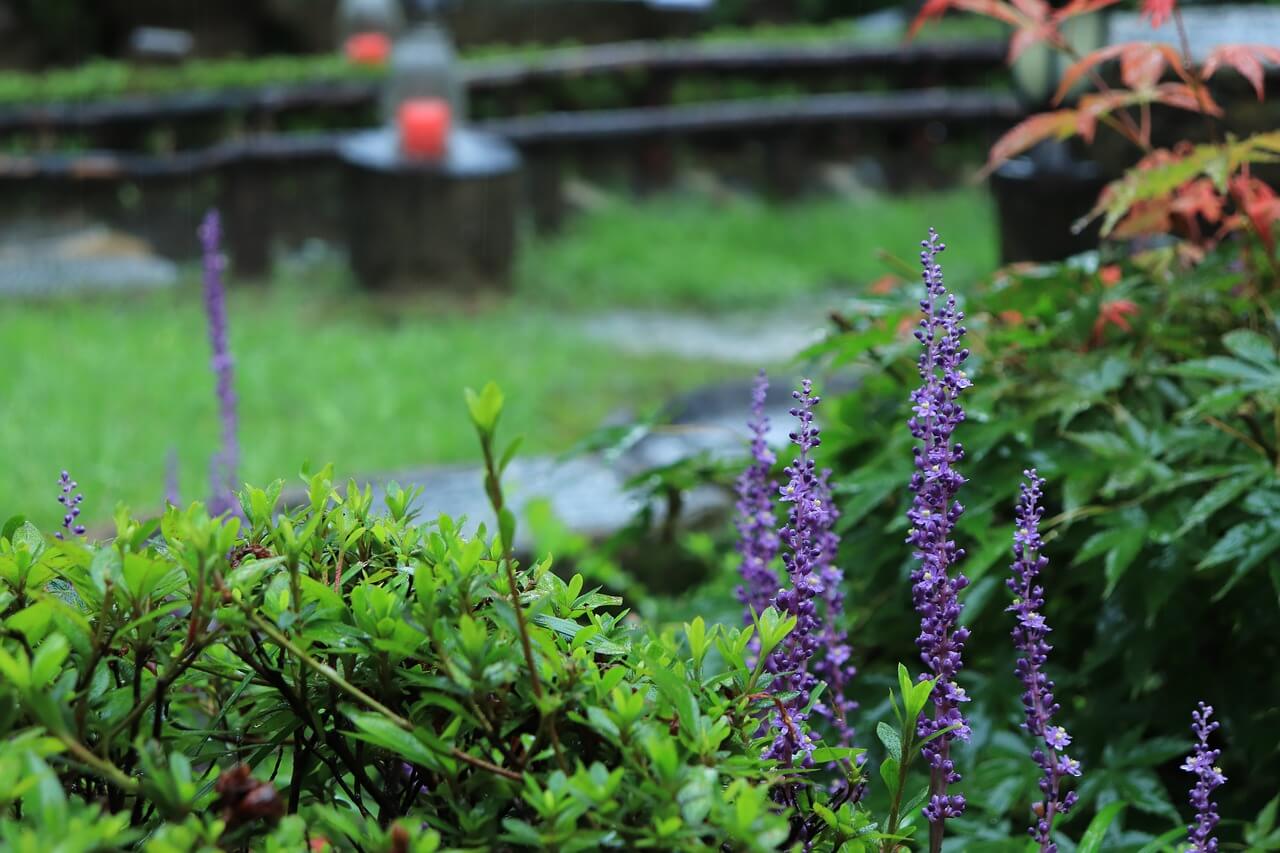Liriope is a fantastic addition to your garden. But how to grow liriope? I’m glad you asked! Let’s look into it in more detail.
What You'll Learn Today
Is Liriope Easy To Grow?

Liriope is a fantastically easy plant to grow. It requires very little maintenance, and it is a good, strong grower.
If you leave it alone, it will slowly spread out to make a beautiful carpet of foliage and pretty flowers.
It works just about anywhere in a garden setting, from being at the front of a bed to being left to its own devices under tree cover.
You can grow liriope outdoors in your garden and it will also perform well if kept in a pot for those that don’t have a lot of garden space.
It likes well drained soil, and prefers to kept on the dry side rather than wet. It is tolerant of shady areas, so is ideal for covering tricky areas under trees.
How To Grow Blue Liriope From Cuttings?
Growing plants from cuttings of an established plant is a very easy way to grow things – and you have the added bonus of not having to grow from seed!
- Dig out the plant, and set it on the ground or a potting bench. Shake it gently to remove some of the soil so that you can see the roots clearly.
- You can use your fingers to pull the crowns apart, or you can cut through the roots using a knife or a spade edge.
- Trim off the leaves from the top of each division, so the plant will put its energy into new growth when it is planted.
- You can now either place the plant in a pot with some good compost to bring it on a bit, or you can plant it directly into the soil.
- Liriope is fantastically hardy, and will take all this rough treatment in its stride, and will reward you with vigorous growth and pretty blooms.
If you like your instructions in a visual form, here is a great video showing you exactly how to divide liriope and grow them from cuttings:
When To Plant Liriope?
This forgiving plant can be planted at just about time of the year, from spring to autumn and just about any time in between!
Always ensure that you water in new plants well, and keep an eye on them until they are well established – but you shouldn’t have to worry too much about your liriope.
The best time to plant, as with most plants, is in the early spring, before the main growth has begun.
If, for whatever reason, you cannot wait for spring, just plant it, water it well and keep an eye on it.
If the plant has been stressed by the move or transplanting, consider using some slow release fertiliser to give the soil a bit of a boost.
How To Plant Liriope?
You can either grow liriope from seed or from cuttings. Both will work well; this is not a plant that is notoriously hard to grow from seed, like some!
Seed
- Plant your liriope seeds in good quality, well draining compost. Water them well, but take care not to over water.
- Keep the pot in a warm, dry place, preferably indoors or in a greenhouse until the little plants are established.
- Transfer them to a larger pot and place outside to “harden off”.
- Finally, you can plant your liriope plants where you ultimately want them to grow. Congratulations!
Cuttings
- Liriope can be divided in the spring, and new plants grown from the roots of the old one. It is a hardy plant however, so this can be done any time of the year.
- Dig up the root ball using a fork, starting a way out from the leaves to ensure that the roots aren’t damaged.
- Cut through the root ball using a sharp knife or the edge of a spade, until you have the desired number of plants.
- Replant your liriope, as always ensuring that it has its favorite well draining soil, and a partial shade position.
If you want some more instructions, this article explains how to divide perennials in more detail.
How Far Apart To Plant Liriope?

How far apart you place your liriope depends on what sort of effect you are going for. Do you want a ground covering? Or plants to accent your garden in certain areas?
If you are seeking ground coverage, plant your liriope 18 inches apart. This will allow each plant the space it needs, while still providing cover.
For accent planting, space your liriope around 24 inches apart. You can place them even further apart than this if you want more space between them.
Liriope will spread, albeit slowly, so if you want to maintain distance between the plants you will have to get your secateurs out!
When To Transplant Liriope?
The best time to transplant your liriope is well out of the main growing season. If it is moved in mid bloom, the plant may become stressed and go slightly dormant.
At the end of the growing season, or at the very beginning of spring is the best time to transplant these little grasses.
This being said, liriope is very hardy, and will cope with being transplanted at just about any time of the year.
If you want to give it the best chance, treat the area you are transplanting to with a good slow release fertilizer, just to give the young plant a bit of a boost.
Make sure that you water it in well, then leave off the watering to ensure that the roots don’t get too soggy and start to rot.
Always ensure that the soil is well draining; this is just about the only concrete requirement for liriope – it hates to get its feet wet!
Liriope is a great garden plant; ideal for filling in spaces where other plants don’t like to grow. It is easy and low maintenance – and it is also very beautiful, even when not in flower.
I want to make an indoor garden. Can I plant my Liriope in with others?
There are a few plants which are considered good companion plants for Liriope – Geranium, Hostas, and various ferns make good pot companions for this hardy grass. Just watch out for Liriope trying to take over the space!